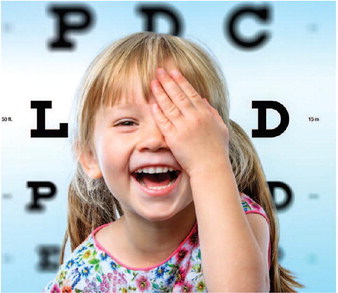Factors that can put kids at risk of vision problems
Vision can be taken for granted. Unless a person has experienced diminished vision or temporary or permanent vision loss, he or she likely cannot imagine life without the ability to see. But such a life is a reality for people across the globe, including many children.
The American Optometric Association notes that children who exhibit certain ocular signs and symptoms require a prompt, comprehensive eye examination to reduce their risk of vision loss. In addition, the AOA notes that certain factors can put kids at significant risk for eye and vision problems. Learning about these factors may help parents recognize vision problems in their children before they contribute to substantial vision loss.
Prematurity, low birth weight, prolonged sup plemental oxygen at birth
A family history of myopia, amblyopia, strabis mus, retinoblastoma, congenital cataracts, metabolic or genetic disease Infection of the child's mother during pregnan cy. Rubella, toxoplasmosis, venereal disease, herpes, cytomegalovirus or human immunodeficiency virus are examples of infections that can occur during preg- nancy that raise a child's risk of eye or vision prob lems.
Maternal smoking, use of alcohol or illicit drug
use during pregnancy
Cortical visual impairment
A dicult or assisted labor, which may be as sociated with fetal distress
High or progressive refractive error Strabismus, a condition in which a person can not align both eyes simultaneously or under normal conditions. This condition is sometimes referred to as 'cross-eyed' or 'wall-eyed.'
Anisometropia, a condition that causes the eyes
to focus unevenly. This condition is often marked by one eye being a different size or shape than the other.
Known or suspected neurodevelopmental dis orders Systemic health conditions with potential ocu lar manifestations
Eye surgery or previous eye injury Taking prescription or nonprescription drugs
(e.g., over the counter medications, supplements, herbal remedies) with potential ocular side effects
Parents also should know the eye exam recom –
mendations for their children's ages. AOA guidelines
recommend children receive their first eye exam be-
tween six and 12 months of age. Children should re ceive at least one additional exam between the ages of three and five, while kids between the ages of six and 17 should get annual exams.
Vision problems can affect youngsters of all ages and backgrounds. Learning the risk factors for such problems can help parents know when to contact their children's eye doctors.



